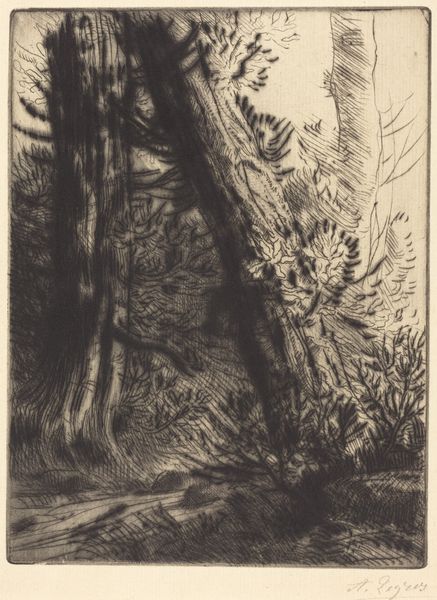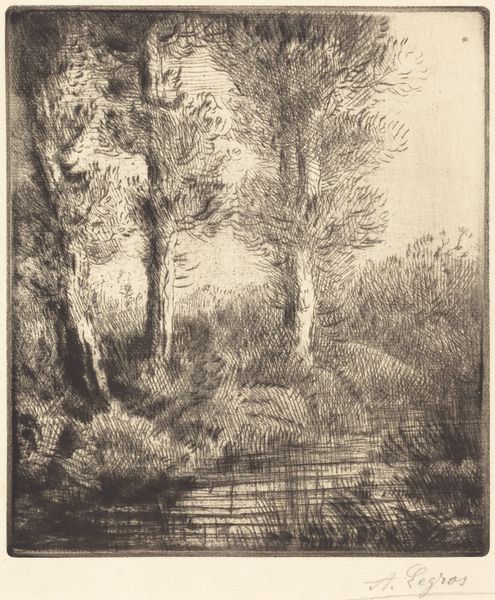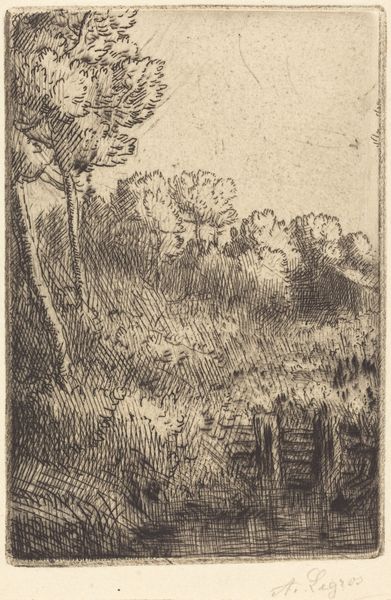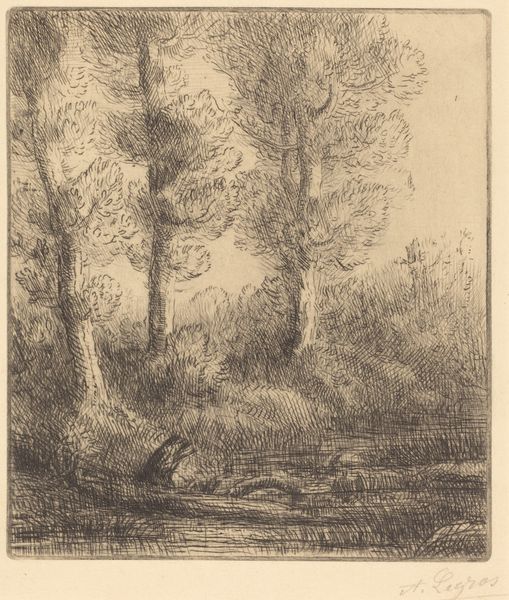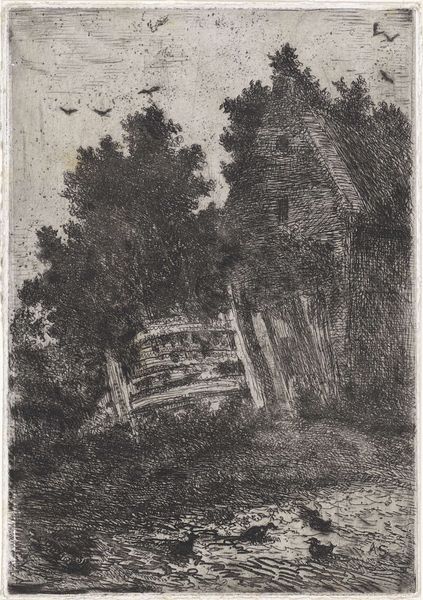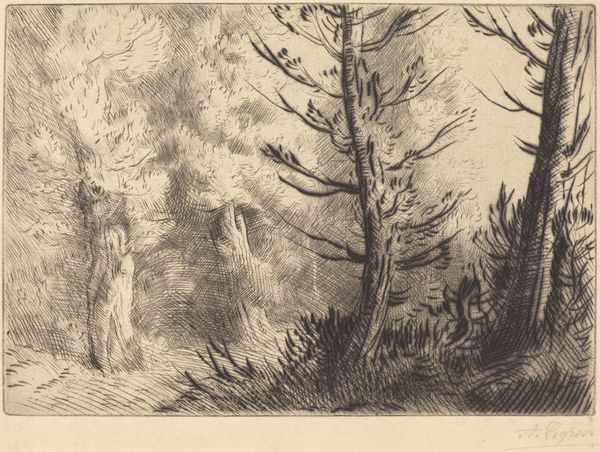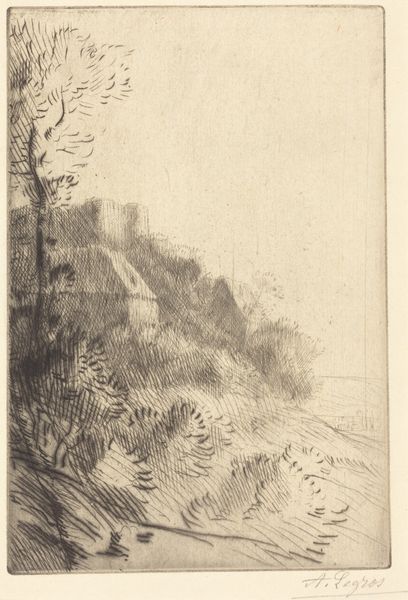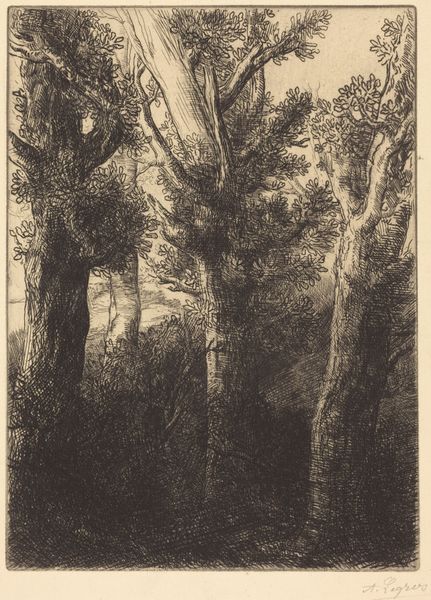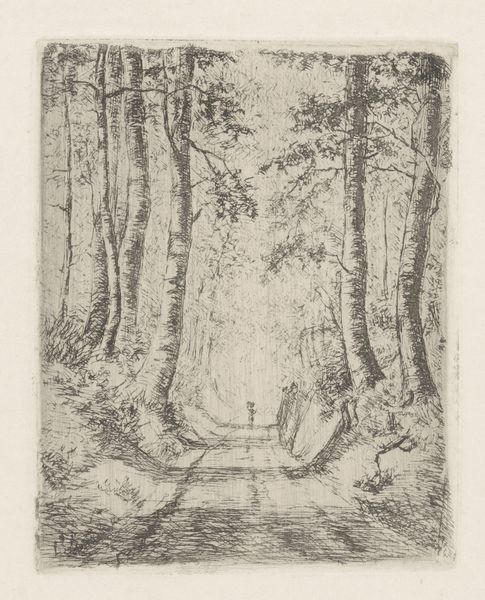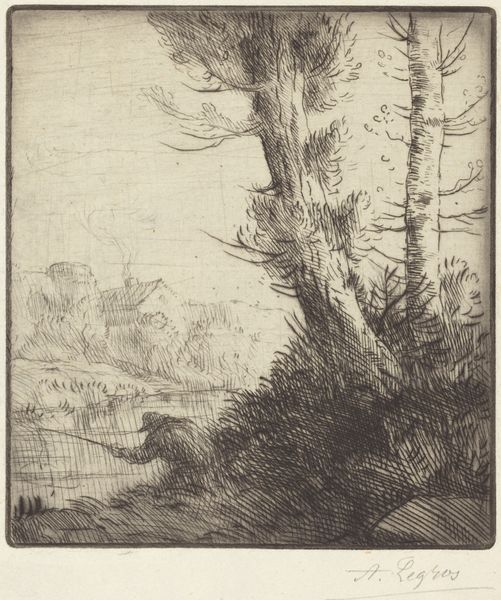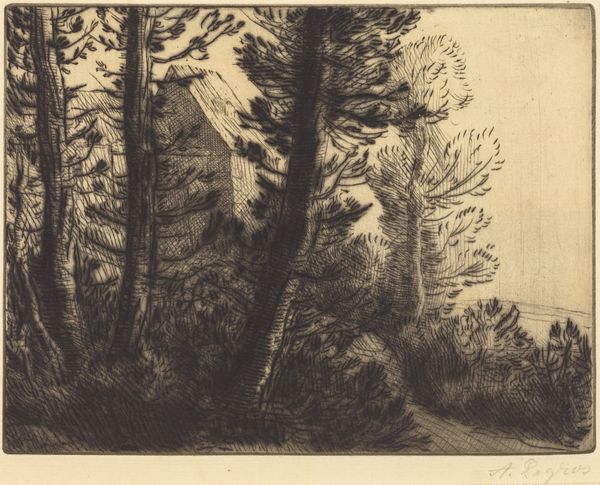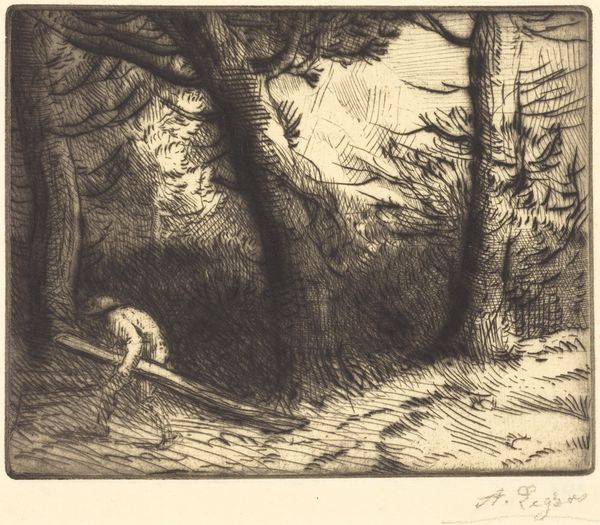
drawing, print, etching
#
drawing
# print
#
etching
#
landscape
#
line
Copyright: National Gallery of Art: CC0 1.0
Curator: Welcome. Today, we’re looking at "Shed," also known as "Le hangar," an etching by Alphonse Legros. Editor: My initial impression is one of solitude, even bleakness. The dense network of lines creates a heavy, almost oppressive atmosphere. It looks cold and damp. Curator: Legros, a figure deeply engaged with the art world of his time, produced this print. It speaks to a broader interest in rural life and landscape that permeated art at the turn of the century. But how do we reconcile such seemingly stark simplicity, of a shed in a forest with his established career? Editor: The real power lies in his medium and methodology, I think. Note how the etching technique, the painstaking scratching into the plate, the acid, dictates a kind of gritty, handmade feel. Each line represents a decision, a labor of love – or perhaps, labor itself is the subject. Curator: Exactly, the act of physically creating these prints connects directly with the world of production. His involvement with the etching revival helped democratize art, allowing wider audiences to engage with original works, pushing back against elitist academic norms of the time. Editor: I'm drawn to how the light flickers; or how his materials, labor and craftsmanship captures the fleeting, yet also sturdy character of raw lumber and sturdy trees. I wonder what sort of lives were supported by it. Curator: Absolutely. His promotion and distribution of etchings through various print clubs provided new markets and challenged established art institutions, bringing a renewed interest to this almost forgotten craft. Editor: Thinking about the act of distributing a rural scene, made by someone by the craft, it almost creates a full circle with Legros' material decisions reflecting these realities. This image wasn't manufactured in a distant studio; you feel the touch, the making. Curator: So, what seems at first glance as just a quiet depiction of a shed unravels into a network of interconnected narratives about labor, rural life, artistic agency, and the role of printmaking within the art world. Editor: It makes you appreciate the weight and richness contained within simple tools and readily available materials. From our present time, it highlights the connection that Legros felt for representing and elevating humble places and ways of living.
Comments
No comments
Be the first to comment and join the conversation on the ultimate creative platform.
